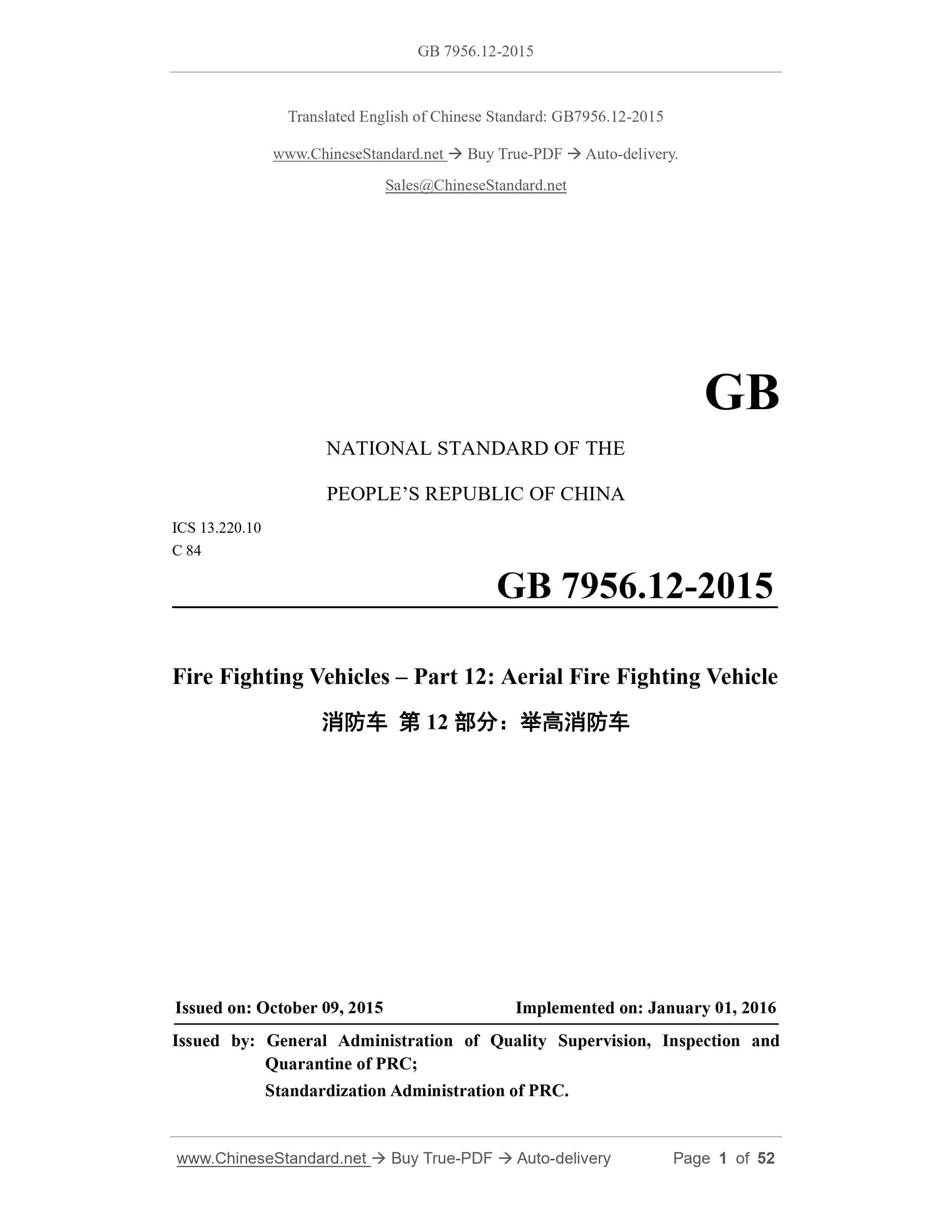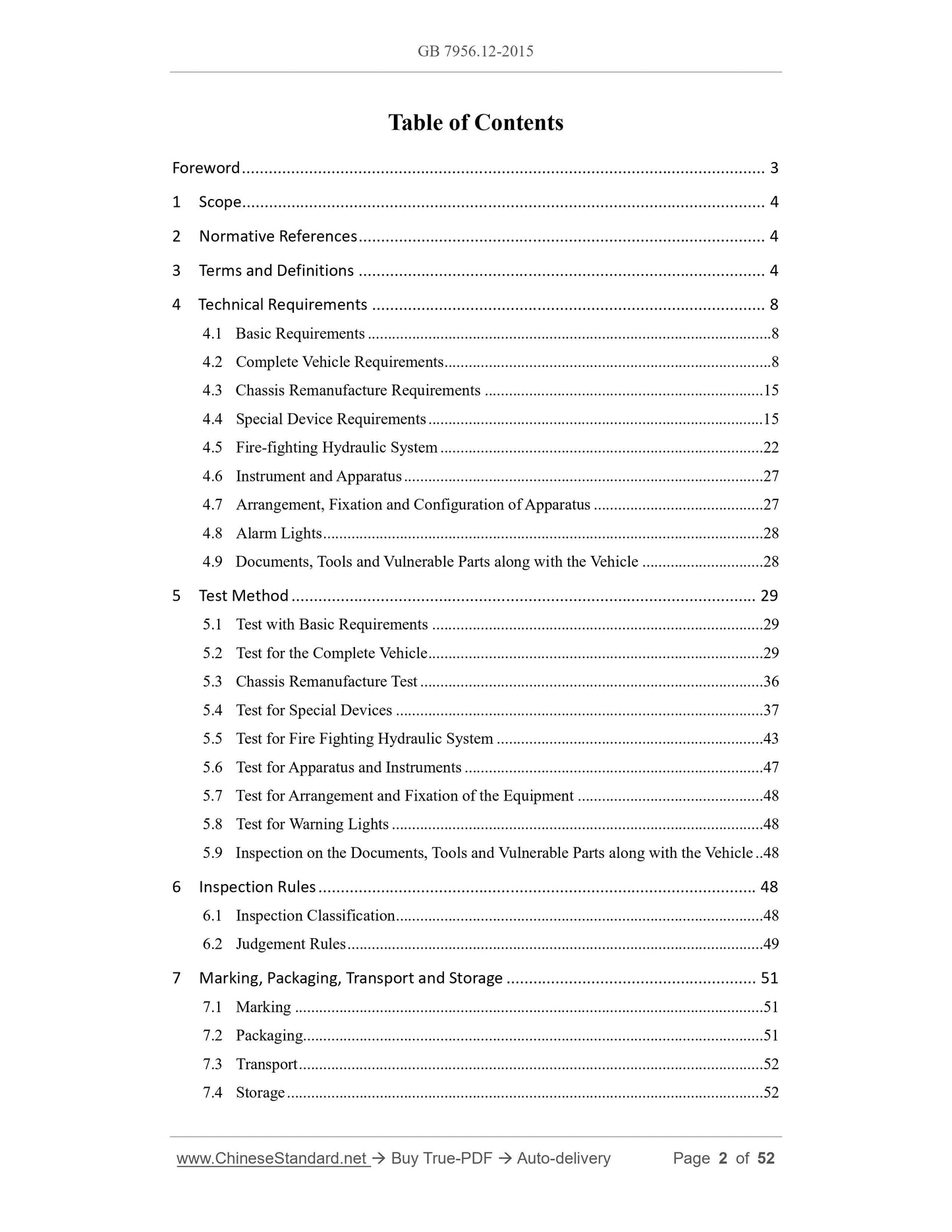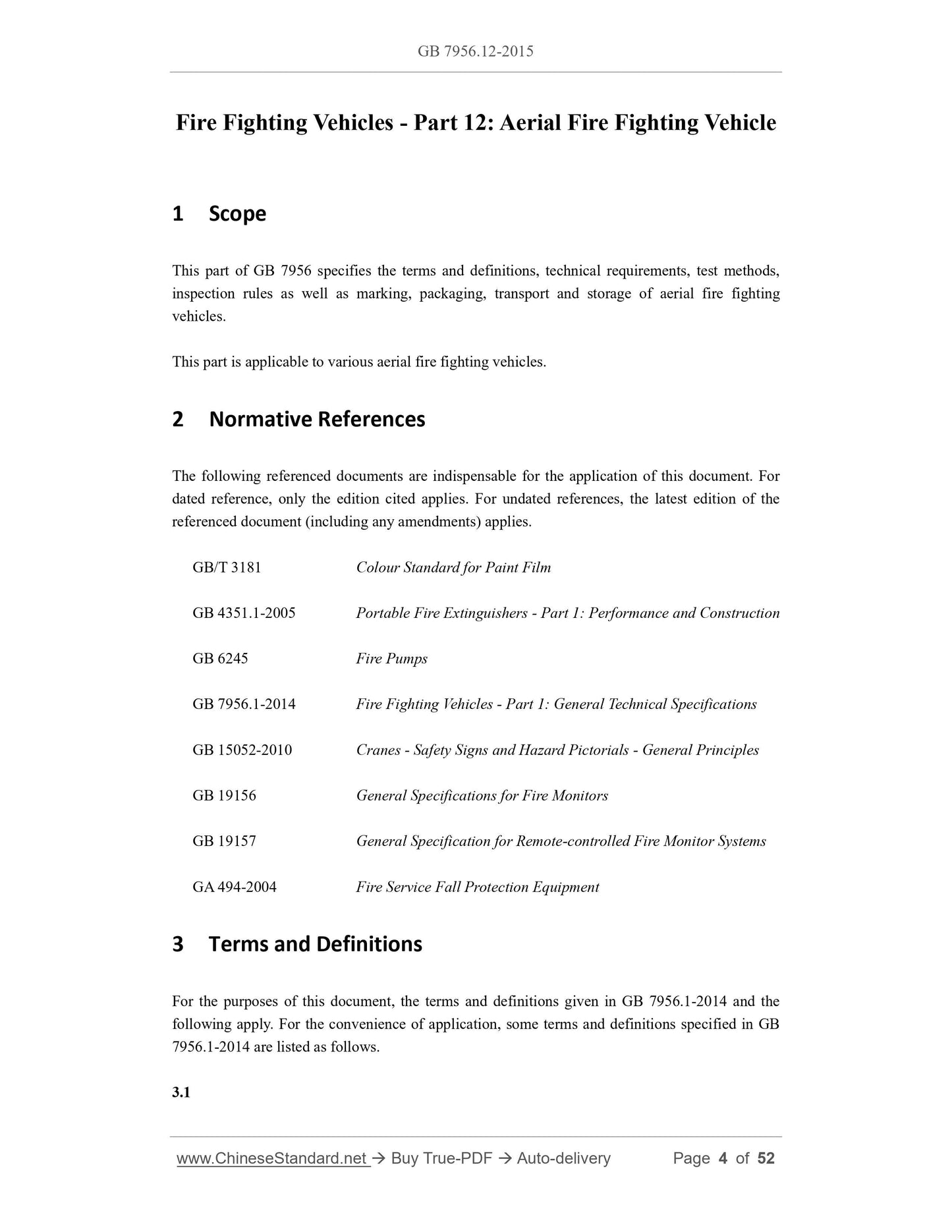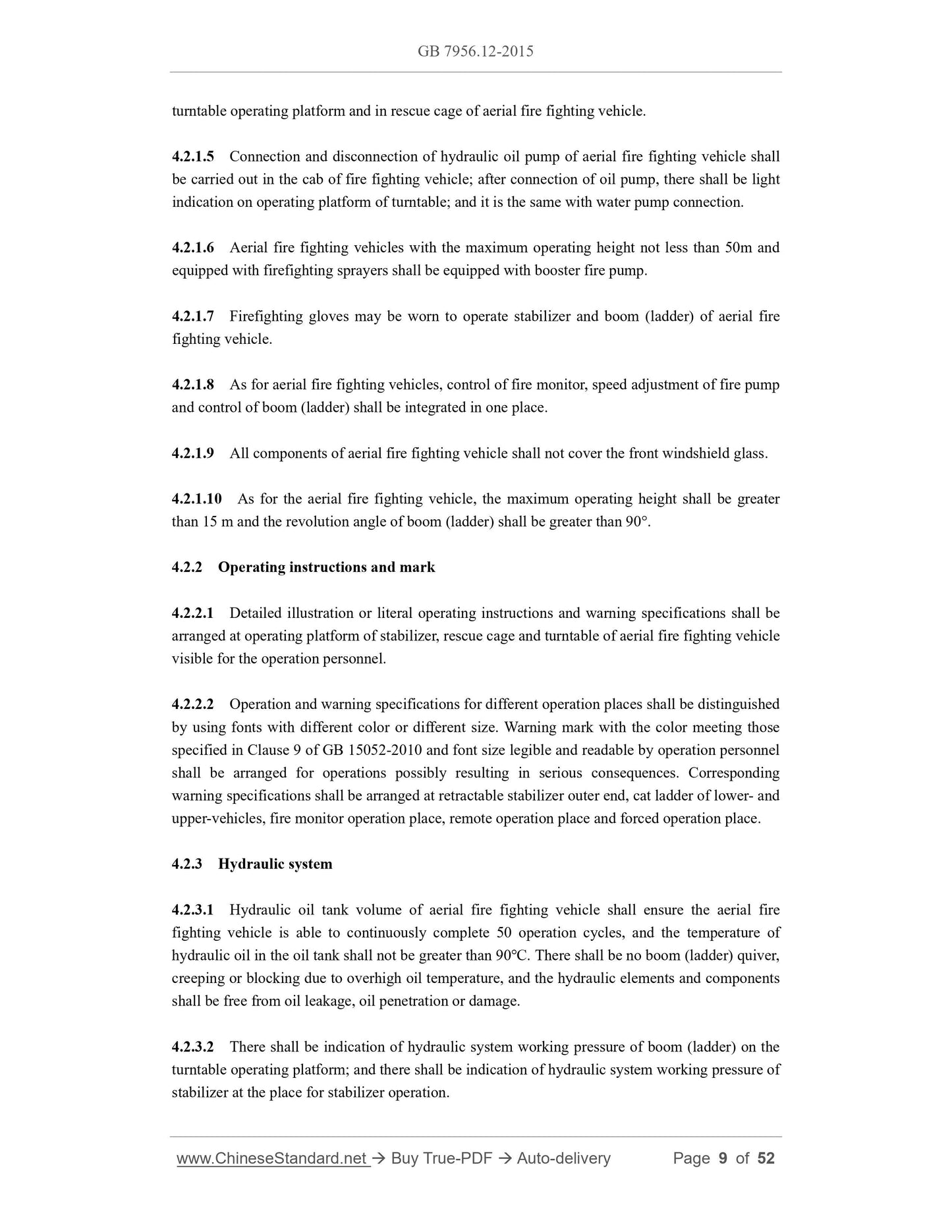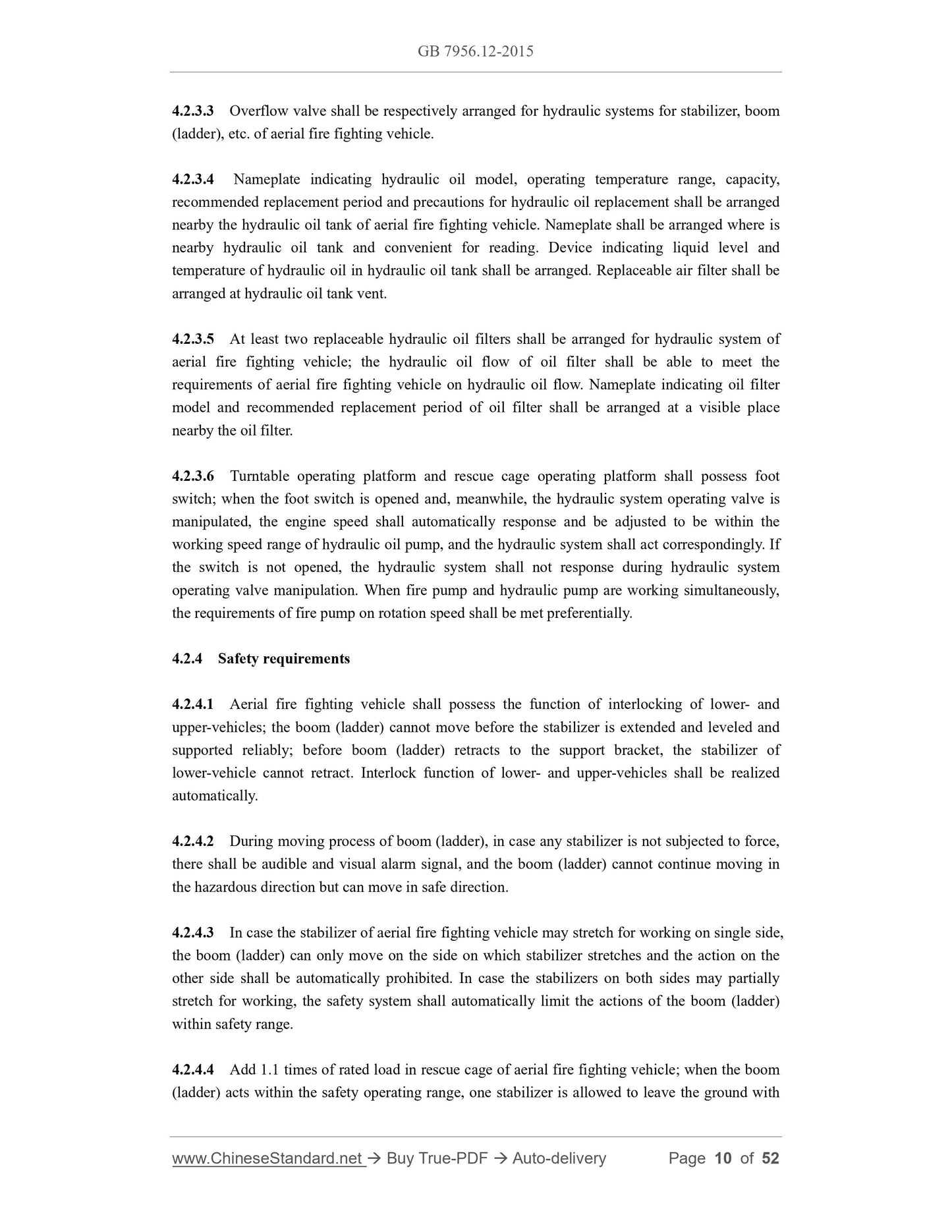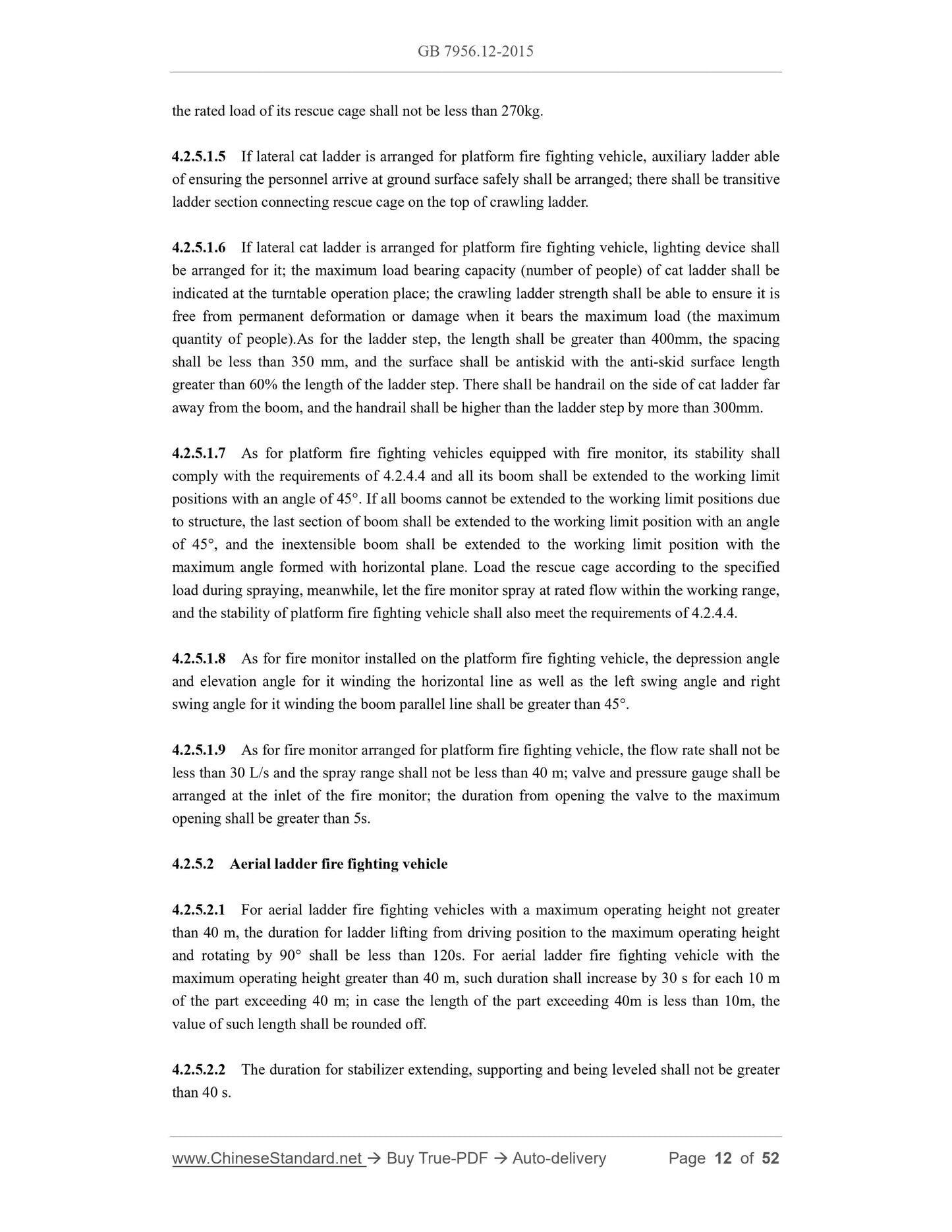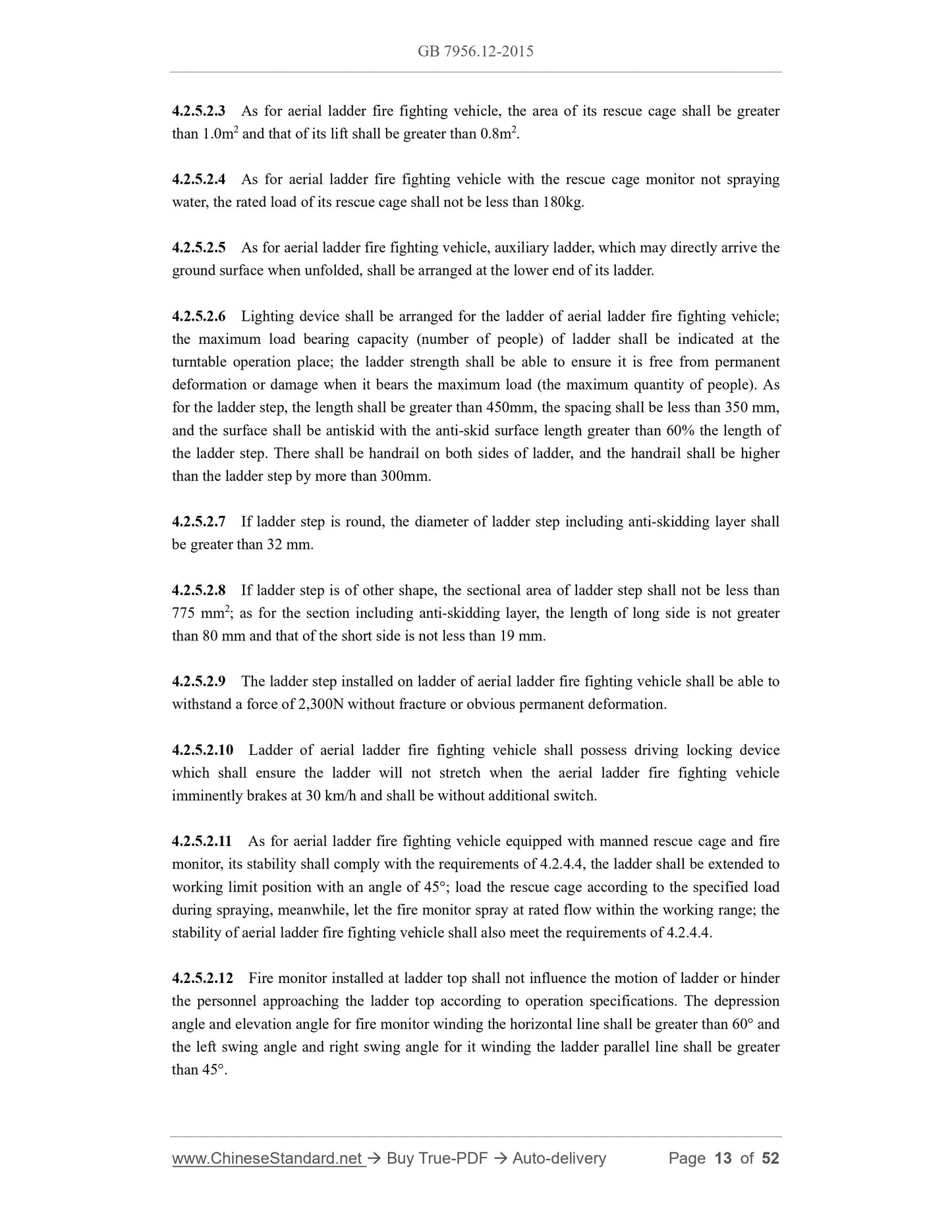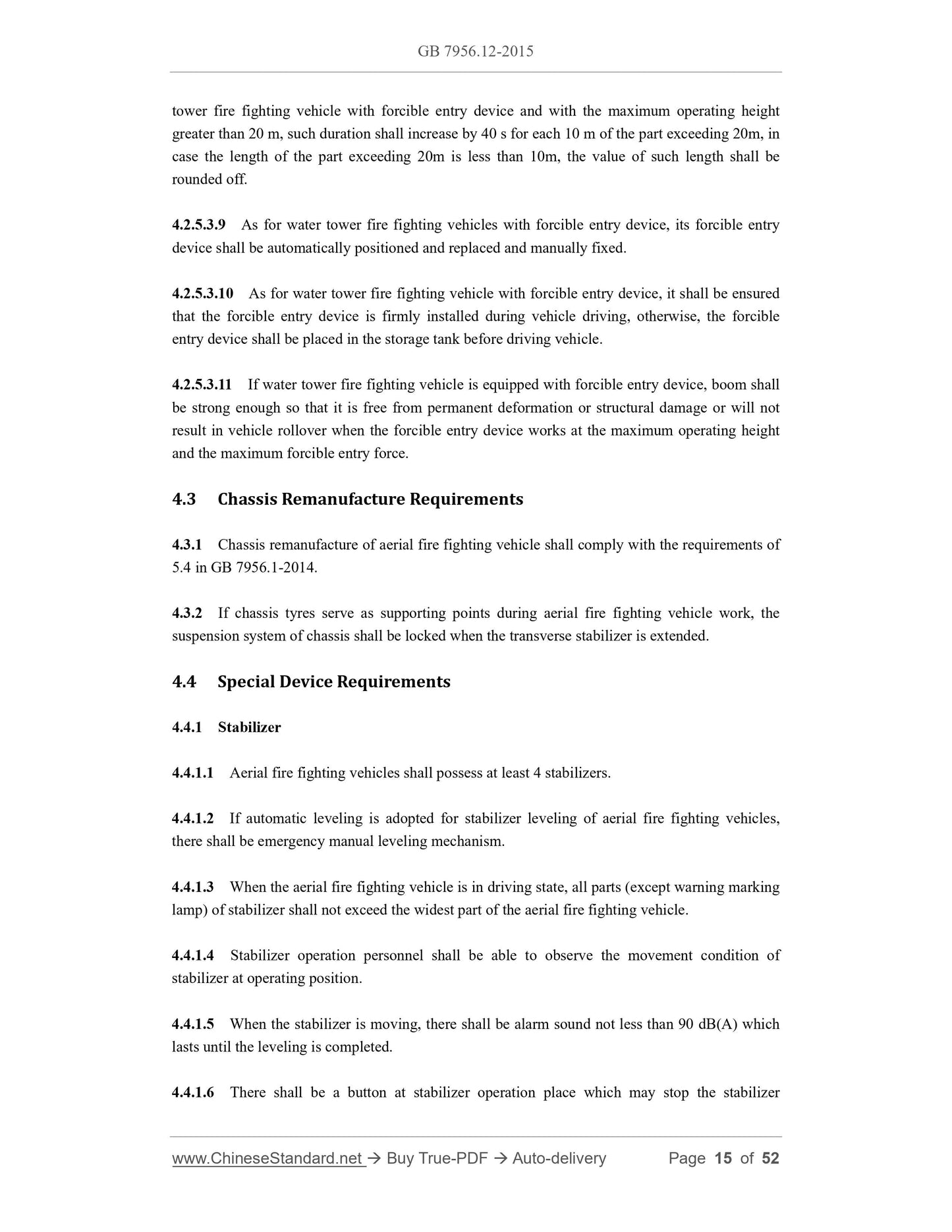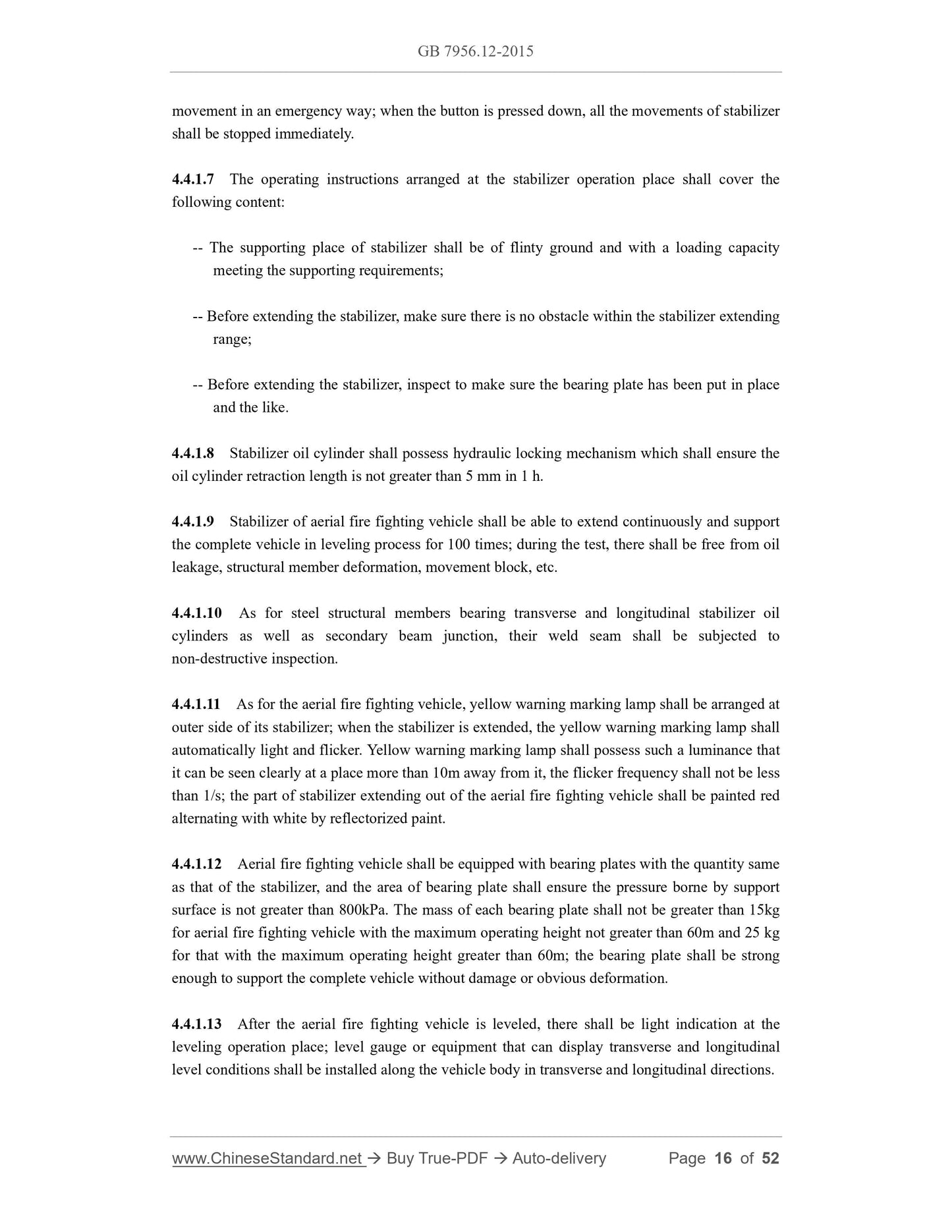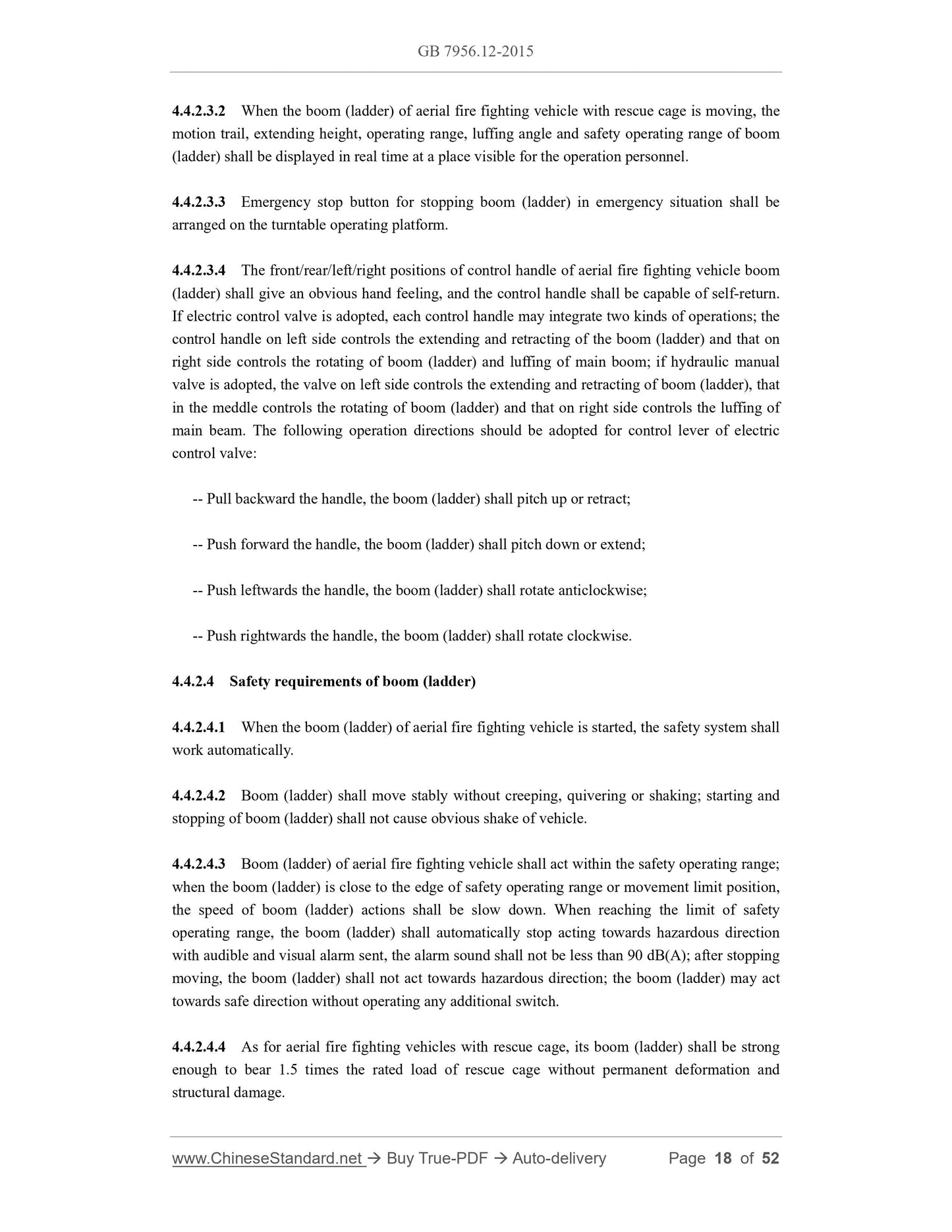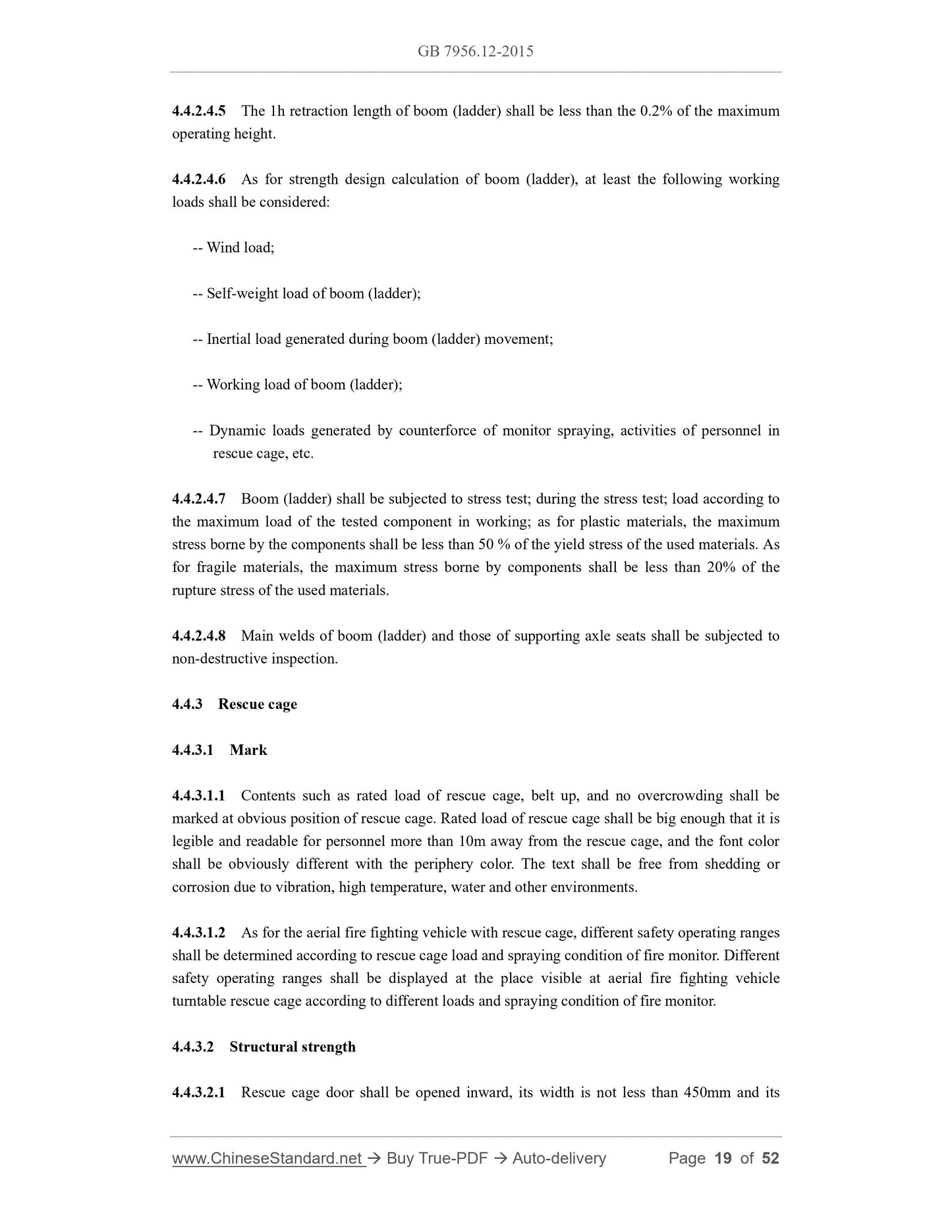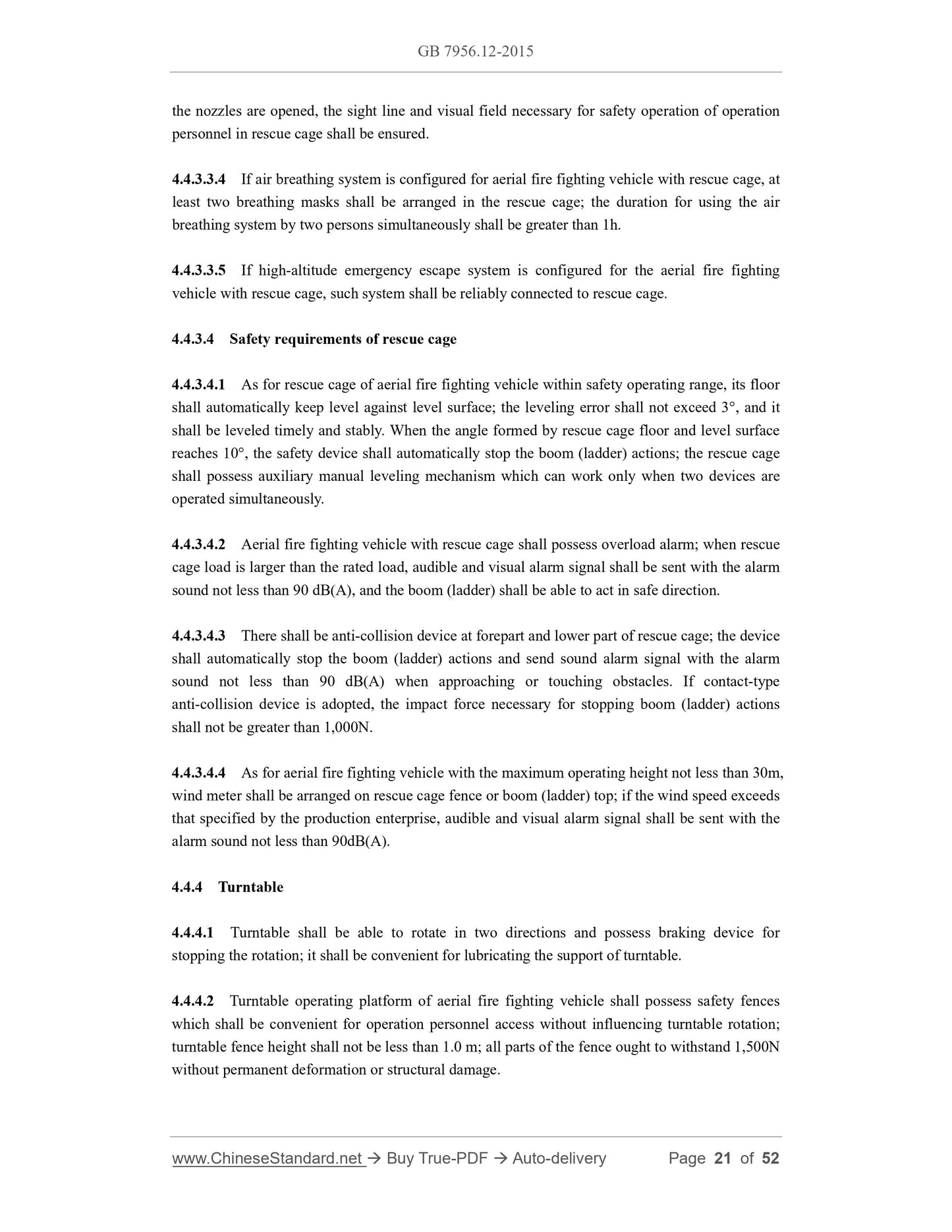1
/
of
12
www.ChineseStandard.us -- Field Test Asia Pte. Ltd.
GB 7956.12-2015 English PDF
GB 7956.12-2015 English PDF
Regular price
$475.00
Regular price
Sale price
$475.00
Unit price
/
per
Shipping calculated at checkout.
Couldn't load pickup availability
GB 7956.12-2015: Fire fighting vehicles -- Part 12: Aerial firefighting vehicle
Delivery: 9 seconds. Download (and Email) true-PDF + Invoice.Get Quotation: Click GB 7956.12-2015 (Self-service in 1-minute)
Newer / historical versions: GB 7956.12-2015
Preview True-PDF
Scope
This part of GB 7956 specifies the terms and definitions, technical requirements, test methods,inspection rules as well as marking, packaging, transport and storage of aerial fire fighting
vehicles.
This part is applicable to various aerial fire fighting vehicles.
Basic Data
| Standard ID | GB 7956.12-2015 (GB7956.12-2015) |
| Description (Translated English) | Fire fighting vehicles -- Part 12: Aerial firefighting vehicle |
| Sector / Industry | National Standard |
| Classification of Chinese Standard | C84 |
| Classification of International Standard | 13.220.10 |
| Word Count Estimation | 28,226 |
| Date of Issue | 2015-10-09 |
| Date of Implementation | 2016-01-01 |
| Quoted Standard | GB/T 3181; GB 4351.1-2005; GB 6245; GB 7956.1-2014; GB 15052-2010; GB 19156; GB 19157; GA 494-2004 |
| Regulation (derived from) | National Standard Announcement 2015 No.31 |
| Issuing agency(ies) | General Administration of Quality Supervision, Inspection and Quarantine of the People's Republic of China, Standardization Administration of the People's Republic of China |
| Summary | This Standard specifies held high fire terms and definitions, technical requirements, test methods, inspection rules and signs, packaging, transportation and storage. This Standard applies to all types of high-lift truck. |
Share
